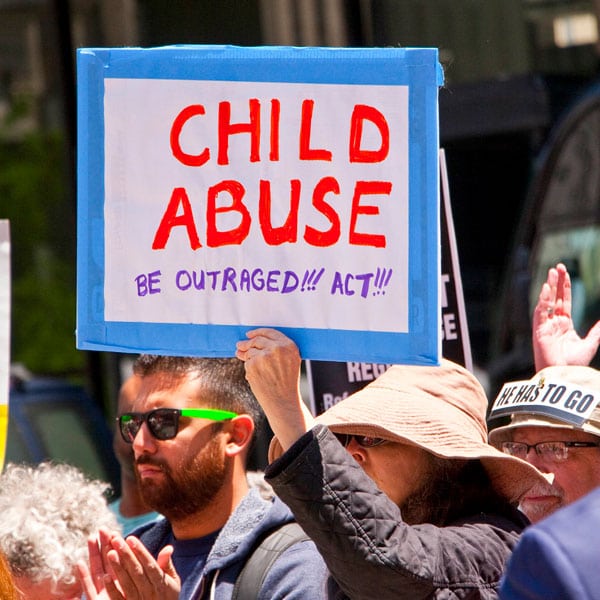
June 20, 2018; New York Times and Slate
After mounting pressure from citizens, lawmakers, and the media, President Trump signed an executive order declaring, “It is…the policy of this Administration to maintain family unity, including by detaining alien families together where appropriate and consistent with law and available resources.” The order is meant to stop the separation of children from their families, and is in response to waves of domestic and international outcry.
But before the waves of relief start rolling in, it is worth looking at the order in context: Why was it written? What does it actually do? And how permanent are its restrictions? There are still many reasons for civic society to remain fully engaged during this “crisis of humanity,” as NPQ’s Cyndi Suarez called it yesterday.
First, it may go without saying that President Trump did not suddenly grow a deep understanding of the issue; in his own words, he “didn’t like the sight or the feeling of families being separated.” Jordan Fabian of The Hill reports, “As he signed the order, Trump added: ‘You’re going to have a lot of happy people.’” Republican lawmakers have expressed concern that the separations could hurt the party’s chances in the November midterm elections; Trump may be merely trying to stem the bad press.
Media headlines have been misleading. The Wall Street Journal’s “Trump Retreats After Fury Over Border Separations,” The Guardian’s “President Trump promises to ‘keep families together,’” the Washington Post’s “Trump caves, embarrassing his sycophants again,” and Politico’s “The Day Trump Caved” all make it sound like a major victory has been won. While it’s true that the order prioritizes “detaining alien families together,” it actually puts families and children at risk in other ways.
One group that won’t be helped by this order are the 2,300 kids already in separate detention. The order makes no mention of them or their families, and the White House has not made any statement about plans to reunite families or send kids to more appropriate facilities or foster homes.
Even the children that come in after this order takes effect aren’t protected from detention. In fact, they may end up staying longer in detention facilities; the order specifies that the Secretary of Homeland Security shall “maintain custody of alien families during the pendency of any criminal improper entry or immigration proceedings involving their members.” That can take months.
Pursuant to a legal settlement between US Attorney General Janet Reno and Jenny Lisette Flores in 1997, children are not supposed to be detained for longer than five days except in unusual circumstances such as “an emergency or influx of minors,” which the Supreme Court has said the US is currently experiencing. In such cases, INS is supposed to place them with foster families or licensed child-care facilities “as expeditiously as possible,” which has generally been understood to be 20 days.
Sign up for our free newsletters
Subscribe to NPQ's newsletters to have our top stories delivered directly to your inbox.
By signing up, you agree to our privacy policy and terms of use, and to receive messages from NPQ and our partners.
Trump has asked, in his executive order, for Attorney General Jeff Sessions to “file a request with the U.S. District Court for the Central District of California to modify the Settlement Agreement in Flores v. Sessions, CV 85-4544 (‘Flores settlement’), in a manner that would permit the Secretary, under present resource constraints, to detain alien families together throughout the pendency of criminal proceedings for improper entry or any removal or other immigration proceedings.”
As Mark Joseph Stern points out for Slate,
This modification would undermine Flores by affirmatively authorizing the open-ended detention of immigrant minors—precisely the kind of traumatic incarceration that the settlement sought to avoid. At best, these children would be detained with their parents until the government located an individual or facility willing to take them into custody…it still ends with the separation of children from their parents, who will remain in detention after their children are released.
ACLU President Anthony Romero expressed what should have been an obvious sentiment: “This executive order would replace one crisis for another. Children don’t belong in jail at all, even with their parents, under any set of circumstances.”
This doesn’t represent a reversal of immigration policy. Maggie Haberman and Michael D. Shear of the New York Times reported, “People close to the president said he remains convinced that his immigration policies are appropriate and necessary.” With the Secretary of Defense in charge of housing the people confined to indefinite detention, the new policies bear a chilling resemblance to the Japanese internment camps of the 1940s.
The title of the executive order is passive-aggressive and telling: “Affording Congress an Opportunity to Address Family Separation.” Trump has maintained that he was forced into separating families by preexisting policies, and while this isn’t true, immigration reform would certainly help. Unfortunately, none of the bills currently proposed are likely to pass, according to members of Congress. Nor would all of them improve the situation; the National Network for Immigrant and Refugee Rights reports that 350 organizations signed a letter expressing “grave concerns with Speaker Ryan’s Border Security and Immigration Reform Act of 2018 and to urge all Members of Congress to vote against this bill.”
The bottom line is, people seeking refuge in the United States, adults and children, are still at risk. While it’s a relief to know that children will not be pulled away from their parents, there is still a significant amount of work to do before they are safe.—Erin Rubin













